- Home
- About Us
- Industry
- Services
- Reading
- Contact Us
Rigless Intervention Services Systems Market: Current Analysis and Forecast (2024-2032)
Emphasis on Location (Onshore and Offshore), Type (Abandonment Services, Pre-installation Services, and Wireline), Technique (Coiled Tubing, Hydraulic, and Wireless), and Region/Country
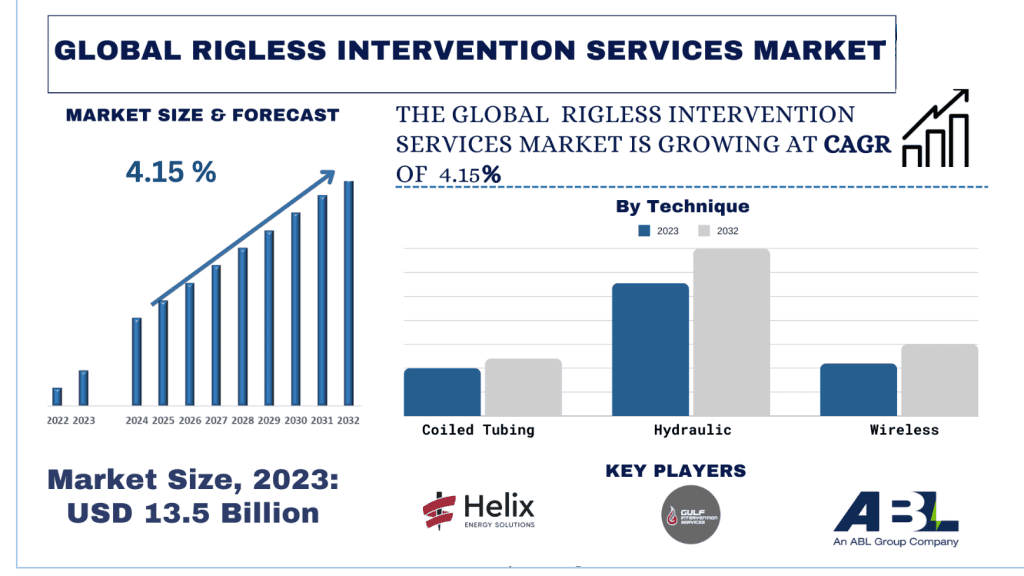
Rigless Intervention Services Market Size & Forecast
The rigless intervention services market was valued at USD 13.5 Billion in 2023 and is expected to grow at a strong CAGR of around 4.15 % during the forecast period (2024-2032).
Rigless Intervention Services Market Analysis
Technological advancements in areas like automation, data analytics, and material science will enhance the capabilities and efficiency of rigless intervention services. The integration of digital technologies will further optimize intervention strategies. Several established oilfield service companies, including Schlumberger, Halliburton, Baker Hughes, and Weatherford, dominate the rigless intervention services market. However, niche players specializing in specific rigless technologies are also emerging.
Regional Analysis:
North America is a major oil and gas producer, and due to mature wellbores and a focus on cost-effectiveness, there is a significant demand for rigless intervention.
Asia Pacific: Rapidly growing oil & gas industry with aging infrastructure, creating a need for efficient well intervention solutions.
Europe: Stringent environmental regulations and a mature oil & gas sector are driving the adoption of rigless technologies.
Middle East & Africa: Increasing exploration activities and focusing on maximizing production from existing wells are propelling the market.
Rigless Intervention Services Market Trends
The rigless intervention services market is experiencing steady growth, which is driven due to several key trends explained below.
Cost-Effectiveness: Rigless intervention offers significant cost savings compared to traditional drilling rig methods. Mobilizing and operating drilling rigs are expensive, and rigless techniques can significantly reduce downtime during well interventions.
Efficiency: Rigless technologies like coiled tubing and electric line units can access and service wells in locations with limited space or complex wellbore configurations. This translates to faster task completion and increases operational efficiency.
Maturing Oil & Gas Fields: The global increase in mature wells and aging oil & gas fields demands adaptable and versatile intervention systems. Rigless services can extend the life of these wells and boost production.
Deepwater Exploration: The rise of deepwater drilling activities necessitates advanced intervention techniques. Rigless methods are proving to be effective solutions for these challenging environments.
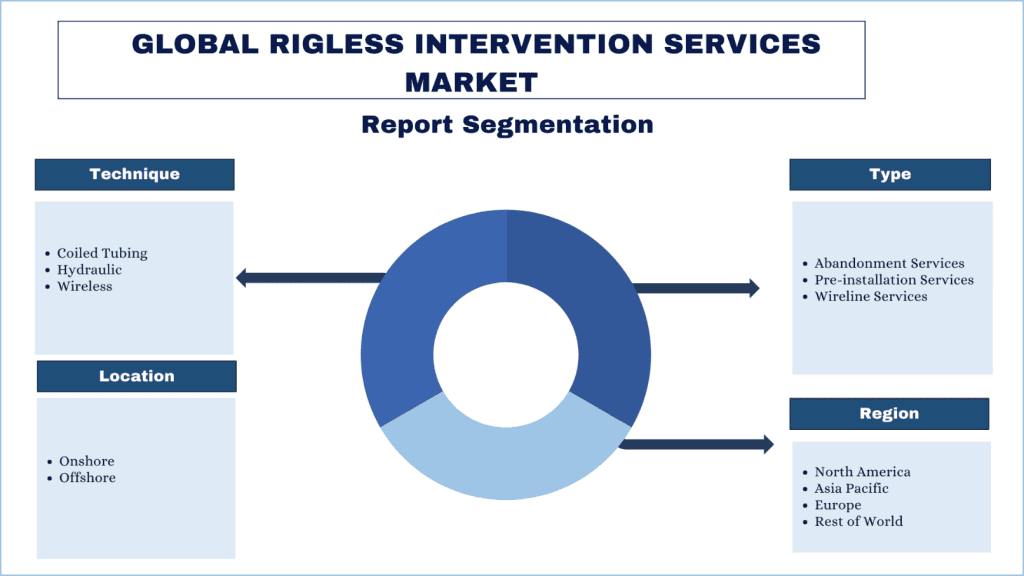
Asia Pacific is Expected to Grow with a Significant CAGR During Forecast Period.
Rapid economic growth in many Asian countries is fueling energy demand. This necessitates maximizing production from existing wells with rigless intervention services can help achieve this goal. Oil & gas companies in the Asia Pacific are increasingly cost-conscious due to competitive pressures. The significant cost savings offered by rigless methods compared to traditional rig-based interventions make them a highly attractive option and boost the demand of the rigless intervention market. Moreover, several regional governments are actively promoting adopting new technologies in the oil & gas sector. This includes support for rigless intervention services, which can improve operational efficiency and resource recovery. The Asia Pacific region has witnessed an increase in deepwater exploration activities. Rigless intervention proves advantageous in these complex offshore environments, as deploying rigs in deepwater is expensive and logistically challenging.
Rigless Intervention Services Industry Overview
The rigless intervention services market is competitive and fragmented, with several global and international players. The key players are adopting different growth strategies to enhance their market presence, such as partnerships, agreements, collaborations, new product launches, geographical expansions, and mergers and acquisitions. Some of the major players operating in the market are Cummins Inc., General Electric Company, Outback Power Inc., Hitachi ABB Power Grid, Capgemini, CGI Inc., KEPCO KDN, Cahors, Honeywell, and SYS TEC Electronic AG.
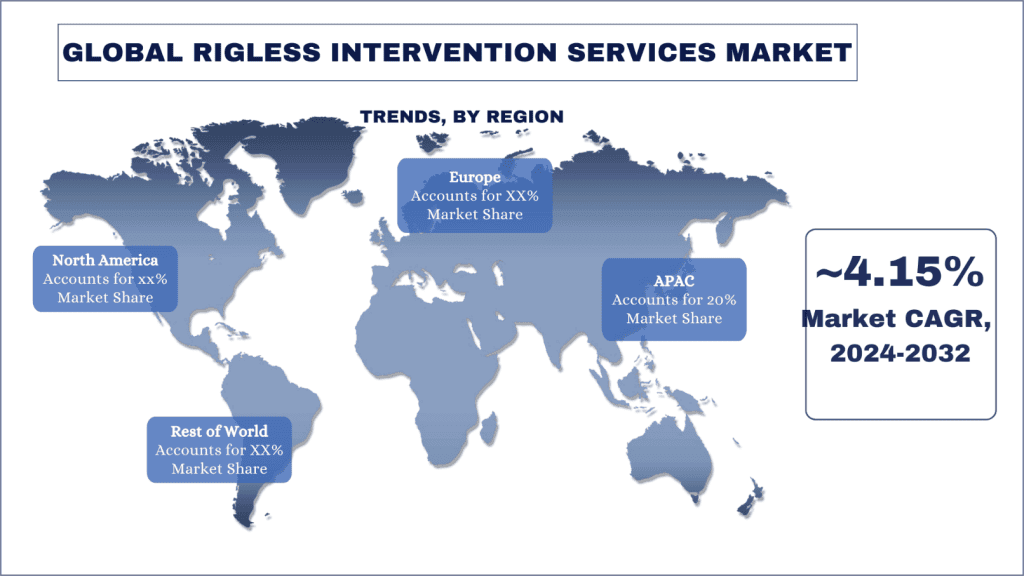
Rigless Intervention Services Market News
2021:
January: Schlumberger unveils its next-generation coiled tubing system, touting enhanced intervention capabilities and operational efficiency.
March: Halliburton announces a strategic partnership with a leading automation company to develop AI-powered solutions for rigless interventions.
July: Weatherford completes a complex well intervention operation in the Middle East using its latest wireline technology.
2022:
February: Baker Hughes launches a new electric line unit specifically designed for deepwater well interventions.
June: Environmental regulations are tightened in Europe, prompting increased adoption of eco-friendly rigless intervention techniques.
Rigless Intervention Services Market Report Coverage
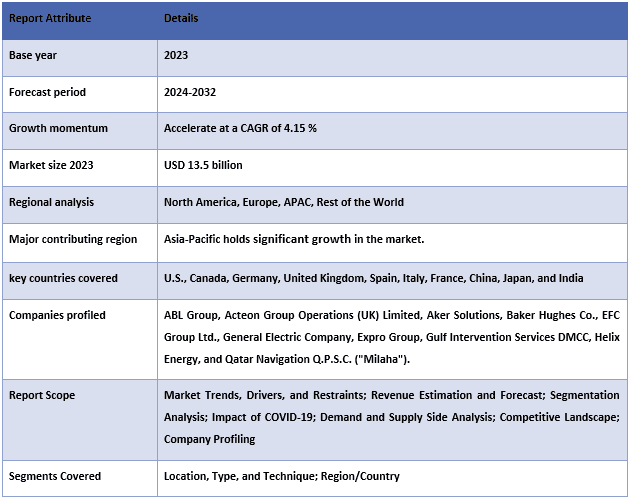
Reasons to buy this report:
- The study includes market sizing and forecasting analysis validated by authenticated key industry experts.
- The report briefly reviews overall industry performance at one glance.
- The report covers an in-depth analysis of prominent industry peers, primarily focusing on key business financials, product portfolios, expansion strategies, and recent developments.
- Detailed examination of drivers, restraints, key trends, and opportunities prevailing in the industry.
- The study comprehensively covers the market across different segments.
- Deep dive regional level analysis of the industry.
Customization Options:
The global rigless intervention services market can further be customized per the requirement or any other market segment. Besides this, UMI understands that you may have your own business needs; hence, feel free to connect with us to get a report that completely suits your requirements.
Table of Content
Research Methodology for the Rigless Intervention Services Market Analysis (2024-2032)
Analyzing the historical market, estimating the current market, and forecasting the future market of the global rigless intervention services market were the three major steps undertaken to create and analyze the adoption of rigless intervention services in major regions globally. Exhaustive secondary research was conducted to collect the historical market numbers and estimate the current market size. Secondly, numerous findings and assumptions were considered to validate these insights. Moreover, exhaustive primary interviews were also conducted with industry experts across the value chain of the global rigless intervention services market. For the assumption and validation of market numbers through primary interviews, we employed a top-down/bottom-up approach to forecasting the complete market size. After that, market breakdown and data triangulation methods were adopted to estimate and analyze the market size of segments and sub-segments of the industry. Detailed methodology is explained below:
Analysis of Historical Market Size
Step 1: In-Depth Study of Secondary Sources:
A detailed secondary study was conducted to obtain the historical market size of the rigless intervention services market through company internal sources such as annual reports and financial statements, performance presentations, press releases, etc., and external sources including journals, news and articles, government publications, competitor publications, sector reports, third-party databases, and other credible publications.
Step 2: Market Segmentation:
After obtaining the historical market size of the rigless intervention services market, we conducted a detailed secondary analysis to gather historical market insights and share for different segments & sub-segments for major regions. Significant segments, such as location, type, and technique, are included in the report. Further country-level analyses were conducted to evaluate the overall adoption of testing models in that region.
Step 3: Factor Analysis:
After acquiring the historical market size of different segments and sub-segments, we conducted a detailed factor analysis to estimate the current market size of the rigless intervention services market. Further, we performed factor analysis using dependent and independent variables such as component and type of the rigless intervention services market. A thorough study was conducted for demand and supply-side scenarios considering top partnerships, mergers and acquisitions, business expansion, and product launches in the global rigless intervention services market.
Current Market Size Estimate & Forecast
Current Market Sizing: Based on actionable insights from the above 3 steps, we arrived at the current market size, key players in the global rigless intervention services market, and market shares of the segments. All the required percentage shares split, and market breakdowns were determined using the above-mentioned secondary approach and were verified through primary interviews.
Estimation & Forecasting: For market estimation and forecast, weights were assigned to different factors including drivers & trends, restraints, and opportunities available for the stakeholders. After analyzing these factors, relevant forecasting techniques i.e., the top-down/bottom-up approach were applied to arrive at the market forecast for 2032 for different segments and sub-segments across the major markets globally. The research methodology adopted to estimate the market size encompasses:
- The industry’s market size, in terms of revenue (USD) and the adoption rate of the rigless intervention services market across the major markets domestically
- All percentage shares, splits, and breakdowns of market segments and sub-segments
- Key players in the global rigless intervention services market in terms of products offered. Also, the growth strategies these players adopt to compete in the fast-growing market.
Market Size and Share Validation
Primary Research: In-depth interviews were conducted with Key Opinion Leaders (KOLs), including Top-Level Executives (CXO/VPs, Sales Head, Marketing Head, Operational Head, Regional Head, Country Head, etc.) across major regions. Primary research findings were then summarized, and statistical analysis was performed to prove the stated hypothesis. Primary research input was consolidated with secondary findings, turning information into actionable insights.
Split of Primary Participants in Different Regions
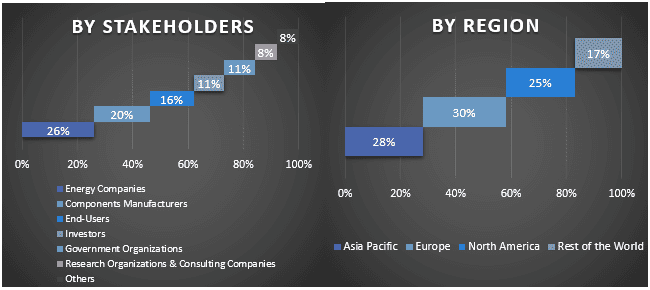
Market Engineering
The data triangulation technique was employed to complete the overall market estimation and to arrive at precise statistical numbers for each segment and sub-segment of the global rigless intervention services market. Data was split into several segments and sub-segments after studying various parameters and trends in the location, type, and technique in the global rigless intervention services market.
The main objective of the Global Rigless Intervention Services Market Study
The current & future market trends of the global rigless intervention services market were pinpointed in the study. Investors can gain strategic insights to base their discretion for investments on the qualitative and quantitative analysis performed in the study. Current and future market trends determined the overall attractiveness of the market at a regional level, providing a platform for the industrial participant to exploit the untapped market to benefit from a first-mover advantage. Other quantitative goals of the studies include:
- Analyze the current and forecast market size of the rigless intervention services market in terms of value (USD). Also, analyze the current and forecast market size of different segments and sub-segments.
- Segments in the study include areas of the location, type, and technique.
- Define and analysis of the regulatory framework for the rigless intervention services
- Analyze the value chain involved with the presence of various intermediaries, along with analyzing customer and competitor behaviors of the industry.
- Analyze the current and forecast market size of the rigless intervention services market for the major region.
- Major countries of regions studied in the report include Asia Pacific, Europe, North America, and the Rest of the World
- Company profiles of the rigless intervention services market and the growth strategies adopted by the market players to sustain in the fast-growing market.
- Deep dive regional level analysis of the industry
Frequently Asked Questions FAQs
Q1: What is the current market size and growth potential of the rigless intervention services market?
Q2: What are the driving factors for the growth of the rigless intervention services market?
Q3: Which segment has the most extensive rigless intervention services market share by technique?
Q4: What are the emerging technologies and trends in the rigless intervention services market?
Q5: Which region will dominate the rigless intervention services market?
Related Reports
Customers who bought this item also bought










